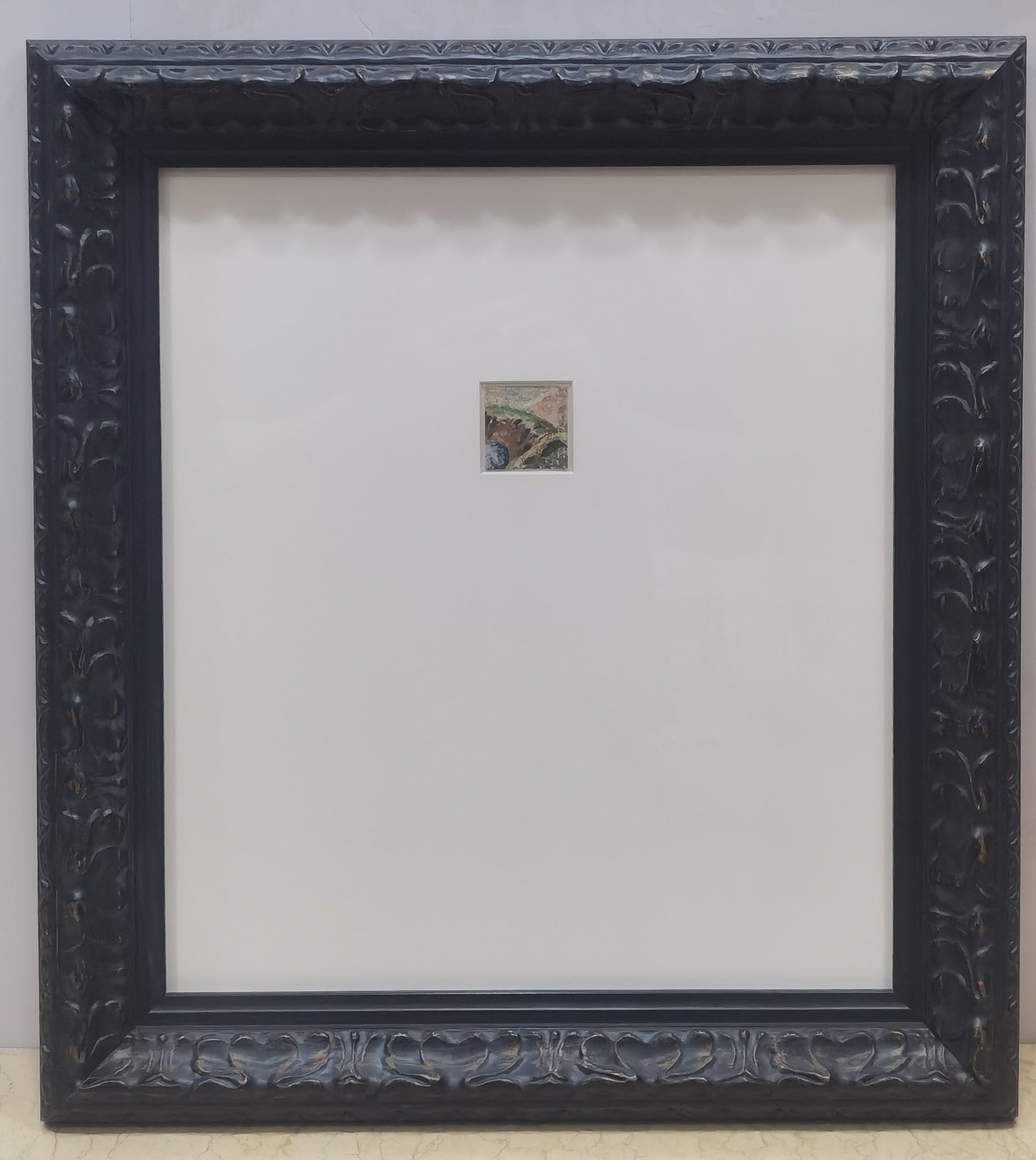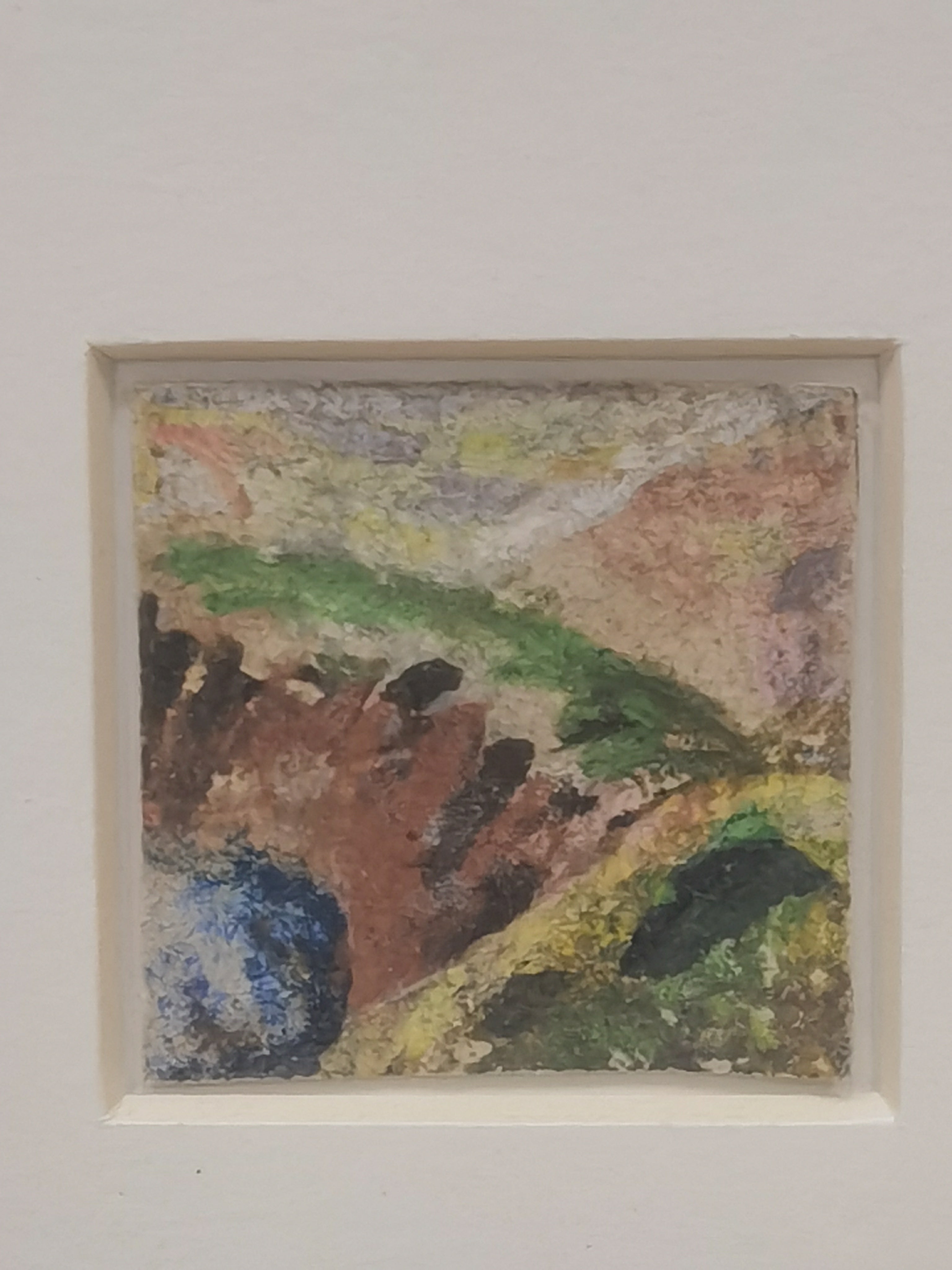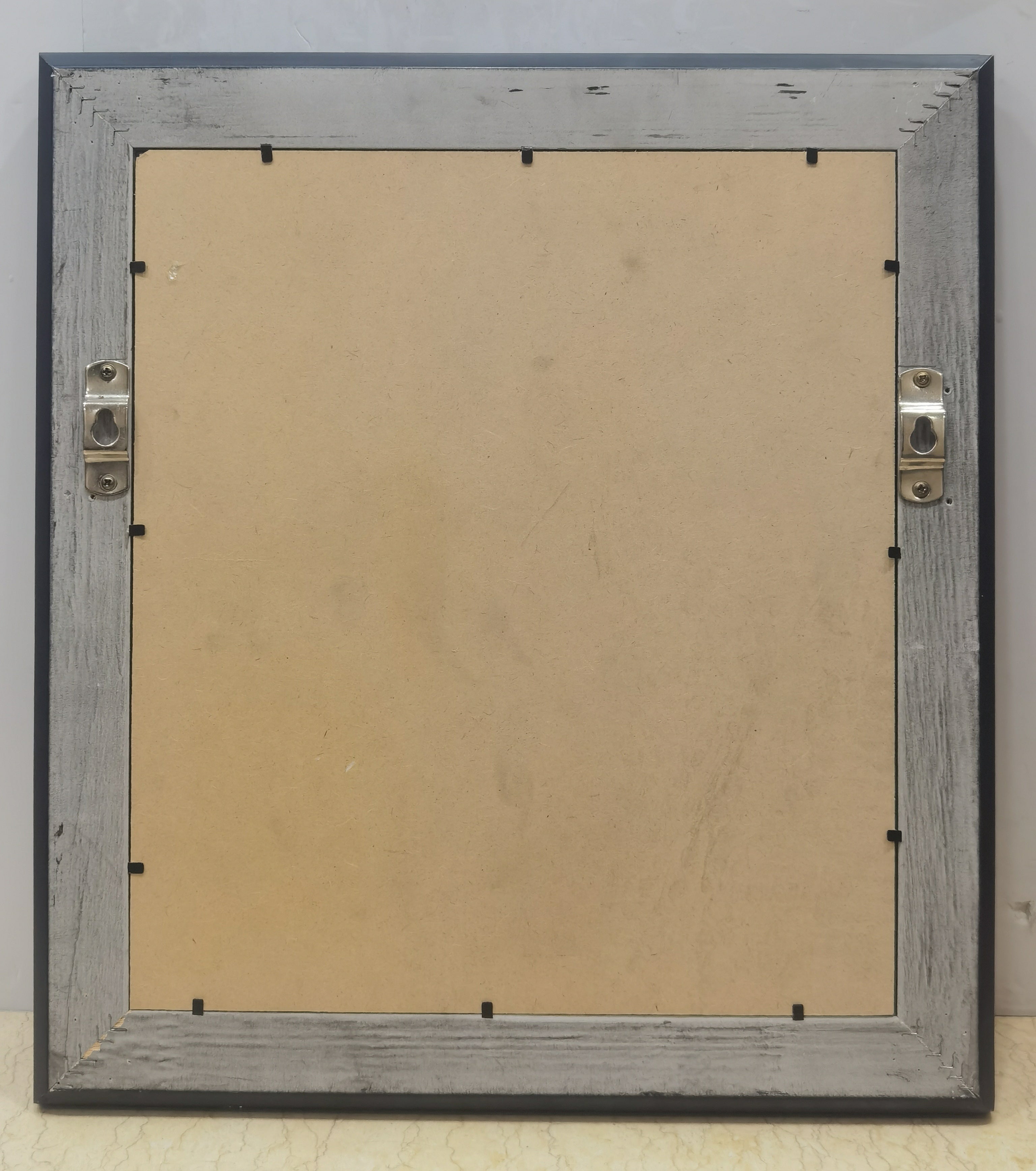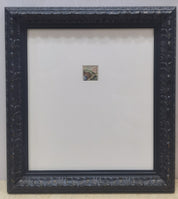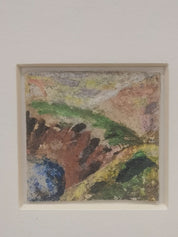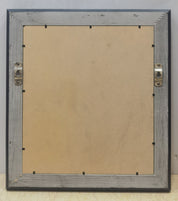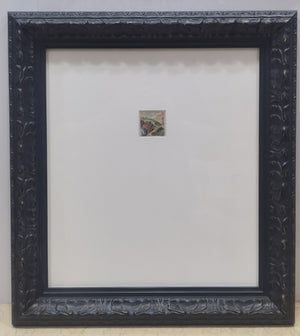Ridge
Kang Wanhua
Artwork Details
Artwork Description
Title: Ridge
Artist: Kang Wanhua
Date: n.d.
Medium: Oil
Dimensions: 1.3 x 1.3 in (3.4 x 3.3 cm)
1. Artwork Identification:
Ridge presents a compact yet emotionally resonant portrayal of a mountainous terrain rendered through expressive textures and saturated hues. The landscape unfolds through jagged slopes of russet, ochre, and green, converging around a vivid blue hollow that may suggest a shadowed valley or pool. Despite its tiny size, the painting pulses with intensity, offering a condensed yet vivid experience of nature.
2. Artistic Style and Influences:
Kang Wanhua employs an expressive, almost impasto technique to build this miniature landscape. The stylistic vocabulary echoes that of early European Expressionism, emphasizing raw color and visceral texture over formal realism. The lack of defined outlines and the layering of pigment reflect an intuitive, emotional approach rather than observational accuracy—underscoring the artist’s internalized view of the world.
3. Historical Context:
Painted during Kang’s imprisonment at the Cha Dian Labor Reform Farm during the Cultural Revolution, Ridge is one of the clandestine miniature works he produced in secret. With limited materials and under constant surveillance, Kang’s art emerged from memory, longing, and resistance. These works, which survived the political turmoil of the 1970s, represent an alternate narrative of Chinese art history—one not aligned with the state’s official canon but rather born of solitude and introspection.
4. Provenance:
Provenance documentation can be provided upon contact.
5. Condition and Conservation:
The artwork is in very good condition. The paint surface is stable, and the vibrancy of its layered pigments remains intact. Framed under protective glazing, the work is well-preserved despite its age and unconventional origin.
6. Artistic Significance:
Ridge is emblematic of Kang Wanhua’s resilience and singular voice. Within its modest scale, the painting conjures the emotional landscape of a prisoner who reclaims his autonomy through art. More than a mere representation of nature, it stands as a metaphor for psychological endurance and the inner ridges that must be climbed in times of hardship. As part of Kang’s broader body of prison works, it contributes to a vital archive of creative defiance and the quiet assertion of self in the face of authoritarian constraint.

